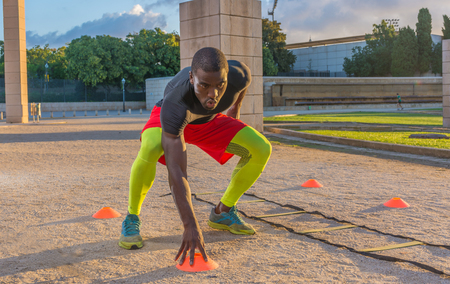Note that your final mark will not be saved in the system.
C2-C3 Training methods for components of physical and skill-related fitness Typeit
Type the correct answers into the spaces. Fill all the spaces before clicking ‘Check Answers!’

Planning training exercises to improve the different skill-related components of fitness will be very much dictated by the sport or activity someone participates in. There is a range of potential exercises that may be performed using a variety of specialist equipment, so coming up with drills may also require a certain level of creativity. This activity will explore some examples for the different components.
Agility
The main method of developing agility is through , agility and (SAQ) training. These are drills that improve the body's neuromuscular system so that it is able to execute -directional movements efficiently. Common equipment for agility drills may include ladders, cones and poles, which can be used as part of a circuit.
Power
The main method of developing power is through training. This involves bounding exercises which improve the ability of the muscles to combine speed and to perform powerful contractions. Common examples include squat jumps, barrier hopping, medicine ball slams, and incline press-ups. A range of gym-based equipment may be required to perform some of these. Exercises for power should consist of three key stages:
- An contraction (lengthening of the muscle)
- A brief period of elastic energy transfer
- A large contraction (shortening of the muscle)
Reaction time
Training exercises for reaction time involve the practice of quick responses to an external . One specific example of this is the ball drop activity in football, where a ball is thrown over the heads of two players facing the opposite direction, who must race to win the ball as soon as it enters their field of vision. Another example is the use of a ball that has jagged edges so that the bounce is unpredictable. Reaction time drills may also incorporate -making by using commands that require different responses.
Balance
Balance training involves the use of specific training exercises that use a reduced-size base of . This may involve single-leg exercises, or it could utilise different types of equipment, such as boards and Swiss balls. Yoga can also be an effective training method to improve balance as it challenges the body to hold a number of different with the centre of mass in a range of positions. Specific exercises may be chosen for sports like gymnastics, such as beam walking.
Coordination